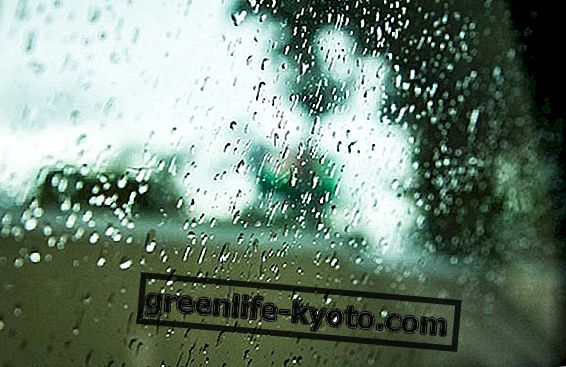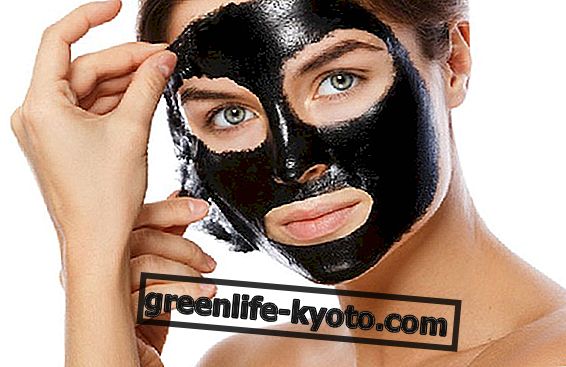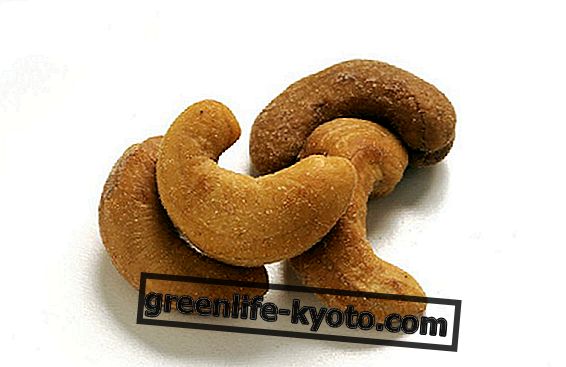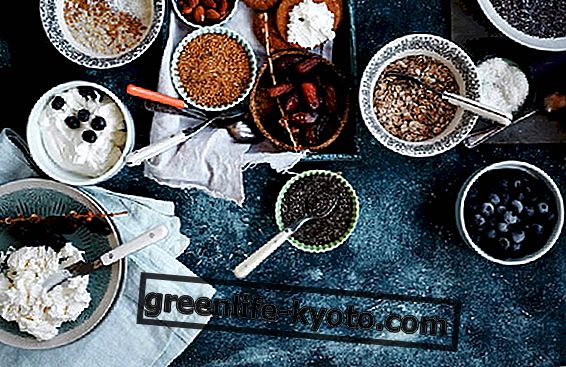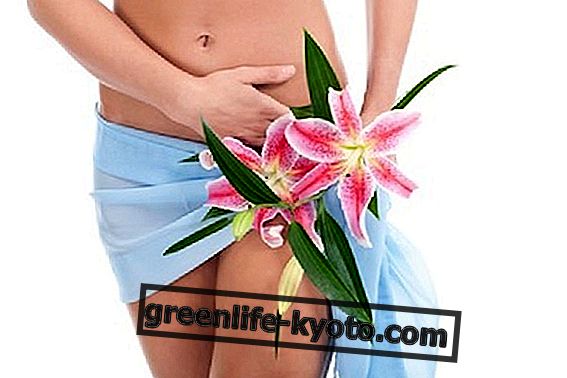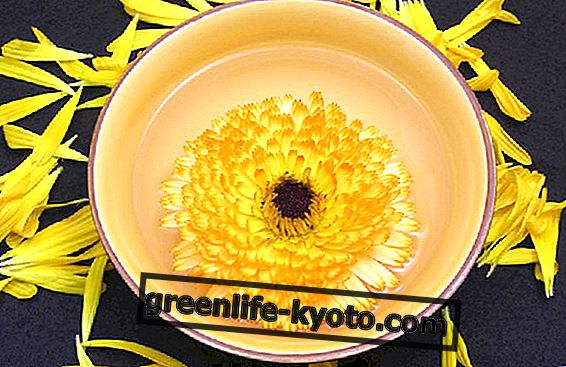A cold is a very common viral disease in both adults and children. What are the causes and symptoms? How to prevent a cold? How to cure it with natural remedies?
The energies fail, concentration also, the nose runs and the simplest actions become complex. Well over 200 viral strains can cause a cold, a disorder that has 2-3 days of incubation before giving rise to obvious symptoms. Let's find out better.

Cold symptoms
The symptoms that reveal an incoming cold are usually cough , secretions from the nose, often mucopurulent, or dense and yellowish. General malaise, a sense of cold, a headache, a dry and inflamed throat are added.
Colds can cause sinusitis and otitis media, frequent complications in children. Anosmia is added to the classic symptoms and to the most frequent complications, the loss of ability to capture odors.
Causes
Colds can be caused by different strains of viruses. There are over 200, but in 50% of cases the cold is caused by the rhinovirus, which reproduces the cells of the nose.
Viruses spread orally, nestle in their hands and make this disorder very contagious. The cold facilitates the infection, because the low temperatures alter the defense mechanisms of the respiratory tract and, in particular, of the nasal ones, which purify and heat the inspired air.
Diagnosis
The cold is diagnosed based on the general clinical picture. The doctor relies on the associated symptoms and generally does not use laboratory tests.
THE CARE FOR THE COOLER
Feeding in case of colds
In the cold, as in general in all flu syndromes, the body must be supported with a natural diet rich in whole grains, legumes, seasonal fruits and vegetables.
All the foods that have antibacterial and antiviral properties like garlic, onion, chilli, cloves and cinnamon are needed.
Some nutritional associations are useful to prevent and reduce the symptoms of colds:
- Spaghetti with garlic, oil and hot peppers.
- Garlic minestrina: crush a clove of garlic and sauté in extra virgin olive oil, add water and cook 50g of pasta in it. At the end of cooking, add chilli, salt and parsley.
- Boiled potatoes seasoned with oil, salt and 2/4 cloves of raw garlic.
Excellent for in case of involvement of the upper airways if combined with a caramelized apple (see recipe in the disorder "Fever")
- Herbal tea of cloves and cinnamon : in a saucepan with 100ml of water, 2 cloves and 1 cm of cinnamon stick are boiled for five minutes. The herbal tea is filtered and drunk in three daily doses.
- Mulled wine: a cup of red wine of excellent quality is added a peel of a quarter of lemon, 3 cloves, ¼ of cinnamon stick, a tablespoon of sugar and starts to boil everything. When the boiling starts it sets the wine on fire, preserving the bactericidal and antibiotic power of the wine associated with the antimicrobial and antiviral actions of the other components.
- Herbal tea with the berry of the five flavors: the dried berries (often on the branches themselves, by the sun) are useful for making herbal teas and infusions by the antiviral action.
The properties and benefits of cinnamon, useful in case of colds

Herbal remedies
Some plants used to fluidify and eliminate nasal secretions contain essential oils with balsamic action and active ingredients with a decongestant action on the nasal mucosa; others have an antihistamine action, useful in allergic manifestations affecting the upper airways.
- Helichrysum: ( Helichrysum italicum ), the flowering tops are used in phytotherapy in the treatment of allergies, which affect the airways and skin tissues and in diseases of the respiratory system both allergic and infectious. Its active ingredients in their synergistic action give the plant antihistaminic, anti-inflammatory, expectorant and antibacterial properties.
- Plantain : ( Plantago lanceolata ) its leaves have expectorant, antibacterial, anti-inflammatory, anti-allergic and decongestant properties. It is therefore effectively used in inflammatory states of the skin and mucous membranes, which cover the nose, mouth, throat and respiratory tract in general, in the case of colds, coughs, allergies, sinusitis and allergic rhinitis.
- Eucalyptus : ( Eucalyptus globulus ) its leaves decongest, burn and calm the irritation of the nasal mucous membranes, they thin the phlegm on which they exert an expectorant action, ie they facilitate the expulsion of the mucus. The plant is used in case of a cold, headache caused by sinusitis, rhinitis and cough.
- Elderberry : ( Sambucus nigra ), the flowers perform sweat and anti-inflammatory and emollient action, attenuating the state of inflammation of the nasal mucosa. Therefore the plant is in the case of cooling disorders, with fever, in the flu states, sinusitis and hay fever also of children.
Among the buds we recall the wild rose ( Rosa canina) , a remedy for nasopharyngitis, tracheobronchitis, tonsillitis (even those recurrent from childhood), effectively used to raise the immune system, even in children and newborns; and the black alder ( Alnus glutinosa ), active in all inflammatory syndromes characterized by mucus production, whatever the compromised tissue. Therefore, it is indicated as a decongestant in the inflammatory and suppurative processes of nasal mucous membranes and in the chronic forms of rhinitis and sinusitis.
To work against colds, a decoction prepared with sarsaparilla, a diaphoretic and expectorant plant, can also be used. To make it, boil a large glass of water and then throw yourself to macerate 15 grams of sarsaparilla roots. After a few minutes, filter and sweeten with honey, then drink the preparation immediately. The infusion should be drunk before going to bed or even during the day. It would be good to go to bed after drinking it as it has great sweat power, so by staying covered in bed, you avoid taking any chills.
Bach flowers for colds
The cold is a nasal congestion that forces us to breathe from the mouth and is thus isolated from odors and flavors with drastic attenuation of discrimination of external stimuli.
Those who suffer chronically because of their vulnerability feel subtly threatened by the outside world.
The threat becomes an alibi for not facing reality and the dark part of oneself, so "we stick our noses", so as not to feel the external stimuli that would undermine a fragile balance and a laboriously consolidated self-image.
- Chicory : the person is always dissatisfied with the behavior of others. As a victim he uses the disease as a weapon of blackmail to better control the outside; for example, a chronic or recurrent cold leaves room for a complacent and tearful attitude. The flower helps to find a behavior of love not conditioned by expectations.
- Honeysuckle: the remedy helps those who live in a state of closure due to previous disappointments. It is indicated for the treatment of respiratory disorders that arise in those who idealize distant days and hide behind the fear of facing the unknowns of today. Discouraged for not having realized his ambitions, he does not accept to grow and avoids being caught up in new emotions.
- Willow : is the flower in the negative state, of resentment, bitterness, of closure. Indicated for those who harbor distrust and hide behind their ailments to complain. The remedy helps to get rid of the feeling of living a condition of injustice, transforming the blame into an awareness of being our own makers, of our destiny.
Also find out how to treat a dog and cat cold
Traditional Chinese Medicine
The cold in traditional Chinese medicine depends strictly on the aggression of external factors such as the hot and cold wind, which are generated due to chemical-physical agents, and are dispersed by going to work on the points:
- FENG CHI (in the depression between the sternocleidomastoid muscles and the trapezius), which eliminates the Wind and purifies Heat;
- HE GU (on the radial side of the index, at the midpoint of the second metacarpal) which tones up the qi ;
- LIE QUE (located on the radial shower, on the tendon of the arm-radial muscle) which stimulates the descent of the qi;
- YING XIANG (on the lower edge of the nose wing), opens the nose and disperses the Wind;
- NEI TING (located at 0.5 cun behind the edge of the interdigital membrane, between the II and III toes) that regulates energy and blocks pain.
Aromatherapy for colds
The essential oils with a balsamic action are used to cure the cold, capable of dissolving and eliminating phlegm and relieving the nasal mucosa. These essences can be taken 2 drops in a teaspoon of honey, 2-3 times a day or spread 1 drop per square meter of the environment, in which you stay. They have this activity:
- Eucalyptus essential oil: with decongestant properties, it fades and calms the irritation of the nasal mucous membranes, thins the phlegm on which it has an expectorant action, ie it facilitates the expulsion of the mucus. In aromatherapy it is used for fumenti, in case of colds, headache caused by sinusitis, rhinitis and cough.
- Essential oil of cajeput: its vapors perform a bactericidal action against beta-hemolytic streptococci, diplococci, and different species of staphylococci, especially with regard to some strains responsible for flu and fever, respiratory tract diseases. The mucolytic and expectorant properties of this essence make it an effective remedy for the treatment of inflammations of the upper airways such as colds, rhinitis and sinusitis.
- Pine essential oil: exerts an expectorant action; softens the phlegm, facilitating its elimination. It is therefore used in case of colds, sinusitis, flu, cough, laryngitis, acute and chronic bronchitis, in flu syndromes, in cases of asthma.
- Myrtle essential oil: well tolerated even by children, it has a mucolytic, expectorant and fluidifying effect of phlegm. Helps relieve the inflamed respiratory tract in case of colds, bronchitis, and in all chronic diseases of the respiratory system.
Homeopathic remedies
The general treatment adopted in homeopathy against colds involves the intake of:
- Aconitum 9 CH (5 granules), useful in case of colds occurring after a cold stroke;
- Allium cepa 15 CH (5 granules every 2 hours), especially in case of sneezing with watery nasal secretions;
- Nux vomica 9 CH (5 granules per hour), after exposure to damp cold, in case of chills and general cooling sensation.
Exercises in case of colds
The cold attacks when the immune defenses are low and this is why it is important to be able to manage stress and engage in activities that facilitate concentration, inner calm and strengthening of respiratory capacity. In this sense tai chi chuan, Chinese internal martial art, and above all the qi gong, Chinese sweet gymnastics, are excellent. It is a work that, starting from a movement on a point, develops internal, structural, articular and energetic connections.
Even practicing a sport regularly (with the foresight not to get cold after sweating) is essential. It has been proven that people who do sports at least five days a week get sick for half the days compared to those who exercise only one or two days a week. Even the severity of symptoms that occur in case of colds is reduced by at least 40% for those who remain active throughout the year.
It is also necessary to follow some prudent and hygienic precautions: an excellent way to reduce the risk of virus propagation is to wash your hands . It is essential to avoid drafts and sudden passages from hot to cold environments and vice versa. Remember to dry your hair and body well after showering. Cover yourself when you are at home and dress in layers when you go out, taking care to use gloves and a hat in the winter season. These precautions are a must for those who practice mountain sports.




